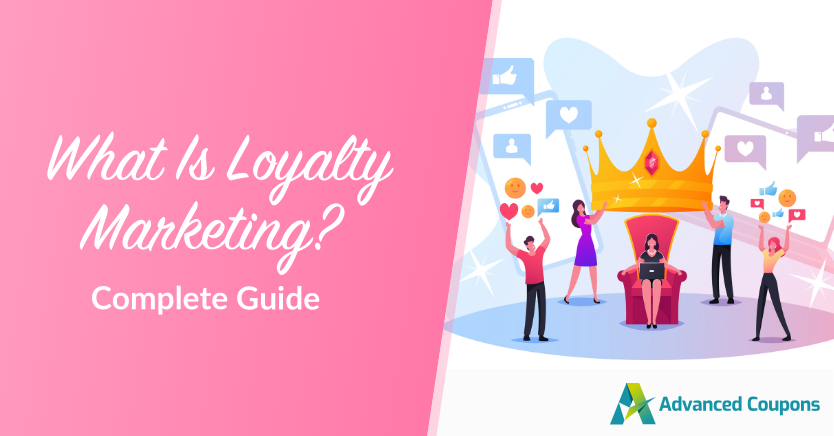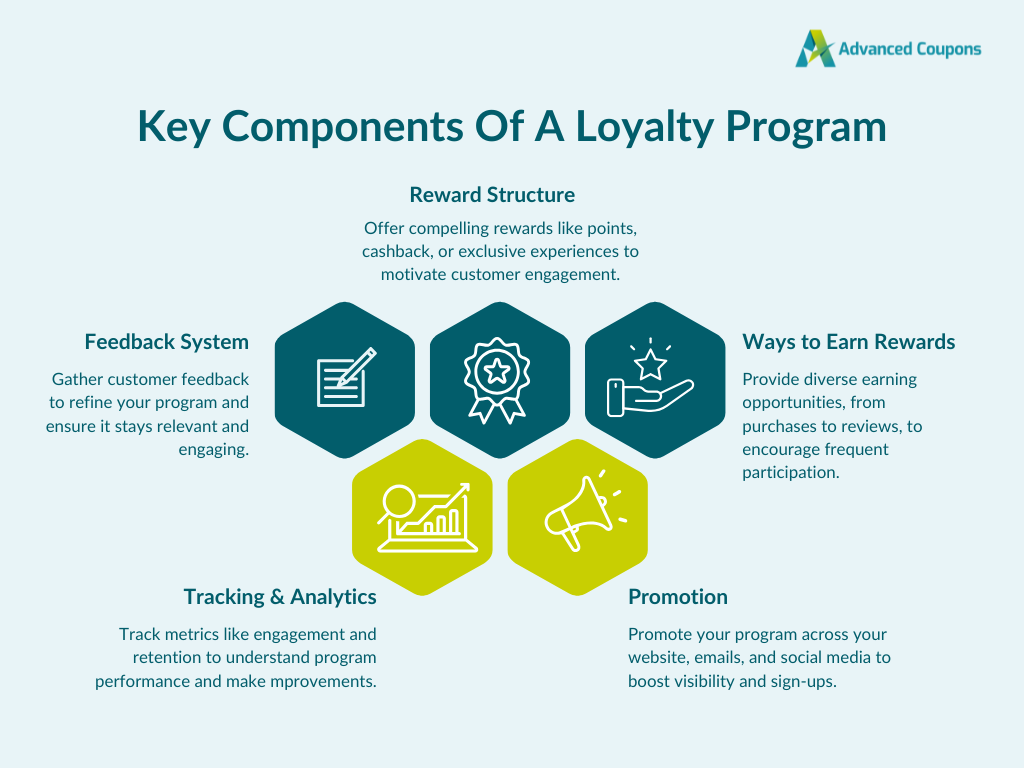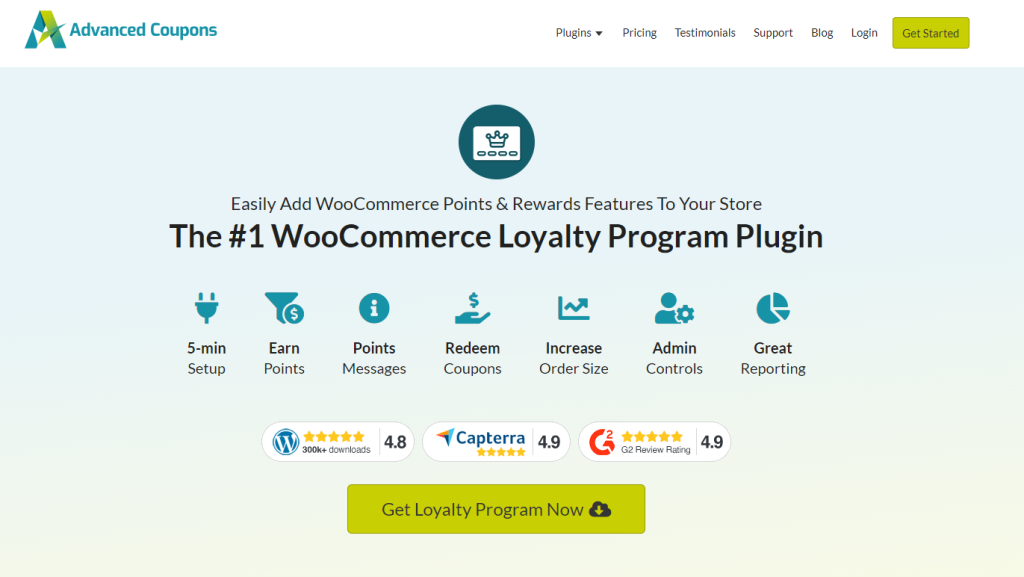
Shoppers nowadays have countless options at their fingertips. Competition among brands is fiercer than ever, challenging marketers to step up their game to keep customers engaged. This is where loyalty marketing comes in. But what is loyalty marketing exactly?
Today, we’re here to find out! In this comprehensive guide, we’ll cover the ins and outs of loyalty marketing and discuss key elements you should know. By the end, you’ll also learn how to launch your own loyalty program in WooCommerce.
Pretty exciting, right? Let’s get right into it!
What Is Loyalty Marketing?
Loyalty marketing encompasses all the strategies employed by businesses to reward existing customers and turn them into repeat buyers. This may include tactics such as offering exclusive discounts, rewarding points, or delivering personalized experiences. The underlying premise is the same: customers get perks for their loyalty, and businesses enjoy their trust and support.
Why is it important?
While this may not be groundbreaking news, it’s always worth mentioning: customer acquisition can be up to seven times more costly than retaining old ones. However, focusing your efforts on nurturing existing customers has benefits that go beyond cost savings.
Check out these compelling statistics:
- 62% of customers are more likely to spend more on a brand if they’re part of a paid loyalty program
- Successful loyalty programs can boost revenue from shoppers by a staggering 15-20% annually
- Customers are 59% more likely to choose a brand they’re loyal to over a competitor
As you can see, a well-implemented loyalty program can make a significant difference in your bottom line. By giving customers a rewarding shopping experience, you can foster a loyal customer base–a crucial factor for long-term success.
Key Components Of A Loyalty Program
After answering “what is loyalty marketing?”, let’s answer another key question in this guide: What makes a loyalty program successful?
Regardless of what type of program you run, there are key elements that lay the foundation for its effectiveness. Each of these components plays a role in keeping customers engaged and delivering value. Let’s walk through each of them below:
1. Reward structure
Consider this the heart of your loyalty program. To successfully entice customers to join, you have to offer a compelling reward that will motivate them to engage with your brand more frequently. There are several types of rewards you can choose from, including:
- Cashback or store credits: Some loyalty programs provide customers a percentage of their purchase back as credit they can spend on future purchases–this gives them a solid reason to return.
- Points: This is one of the most common forms of loyalty incentives, where shoppers earn “points” for every purchase or action. They can redeem this later for coupons, products, services, discounts, or other special perks.
- Exclusive experiences or access: You can also provide customers with members-only access to events like product launches, early sales, or even workshops.
Check out our list of the most compelling loyalty incentives here.
2. Ways to earn rewards
Successful loyalty programs make earning points and rewards fun and easy for shoppers! Offering a variety of ways to reward customers increases the likelihood of their participation, knowing they’re rewarded for different types of interactions with your brand. Take a look at the example below:

For instance, plugins like WooCommerce Loyalty Program allow you to set up multiple ways for shoppers to earn points apart from purchases. With this plugin, you can reward customers when they sign up for an account, leave product reviews, spend over a certain amount, and more. This is handy for targeting specific business goals as well, such as encouraging more customer sign-ups or increasing average order values.
3. Promotion
Unfortunately, even the most compelling loyalty program won’t succeed if shoppers don’t know about it! This is why communicating the value of your rewards program is crucial. Actively promoting your loyalty program can help build excitement and encourage customers to join.
Here are some of the most effective ways to do this:
- Offer incentives for signing up: Make joining your program immediately rewarding by offering customers perks for signing up, such as bonus points or free shipping.
- Leverage your website: Create a dedicated landing page for your rewards program, outlining the benefits of joining. Likewise, you can leverage pop-ups or banners to inform customers as they browse your website.
- Send out emails: Make sure your subscribers are in the loop! Send out targeted emails to new and existing customers, inviting them to join and communicating the benefits of doing so.
- Post on social media: Spread the word about your loyalty program on your social media channels! Share engaging visuals that highlight the perks of joining your loyalty program or testimonials from satisfied loyalty members.
4. Tracking and analytics
Launching a loyalty program is not a set-and-forget endeavor. To maximize its effectiveness and ensure its success in the long run, you have to constantly analyze and iterate.
At its core, loyalty programs give you valuable insights about what incentives work for your customer base. By tracking and analyzing how your loyalty program is performing, you can understand customer behavior and make data-driven adjustments to improve customer retention.
Here are some key metrics to consider tracking:
- Purchase frequency and average order values (AOV): Often, the goal of loyalty programs is to keep customers coming back for more orders. Tracking these metrics helps you determine if your incentives are compelling enough for customers to return for repeat purchases.
- Customer engagement: Some examples include sign-up rates, reward redemption rates, and general participation in your loyalty program.
- Customer retention: Tracking customer retention rates can help you assess if your loyalty program is effective in building long-term loyalty.
It’s important to choose a tool that gives you a solid overview of how your loyalty program is performing. For instance, our WooCommerce Loyalty Program provides store owners with a comprehensive dashboard that summarizes important data like points redemption rates and top actions and points accrual:

With this crucial information at your fingertips, you can make informed decisions on how to improve the effectiveness of your loyalty program.
5. Feedback system
We’ve touched on the importance of tracking quantitative data above, but it’s just as crucial to consider the “qualitative” aspect of it! After all, your loyalty program can only thrive if it resonates with your customers. You can gather insights by establishing a feedback loop, where customers can voice out their concerns and suggestions.
There are several ways you can do this. For instance, you can send out feedback requests to loyalty program members. This can be as simple as a quick poll to understand if they’re satisfied with the current reward system. You can further encourage participation by offering small rewards (feedback incentives), such as bonus points or small discounts when they complete these feedback surveys.
How To Launch A Loyalty Program In WooCommerce
We’ve answered what is loyalty marketing and its key components, so now it’s time to dive into the action part. Thankfully, with all the tools and technologies available today, you won’t need to build your loyalty program from scratch. WooCommerce store owners can leverage plugins like Advanced Coupons’ Loyalty Program to easily set up a points and rewards system in minutes!
With this plugin, you can launch a loyalty program in WooCommerce and reward customers for engaging with your brand. You can choose to grant points for actions like signing up, making purchases, leaving reviews, and more. What’s more, you gain access to a comprehensive dashboard that provides key insights about points total, actions, and other key metrics.
Ready to launch your loyalty program in WooCommerce? Check out our complete tutorial here!
Frequently Asked Questions
What is loyalty marketing?
Loyalty marketing encompasses all the tactics marketers use to foster long-term relationships with their customers and keep them coming back. It entails rewarding shoppers for their engagement, whether through exclusive discounts, points, experiences, or other perks, depending on how the loyalty program is structured. At its core, its goal is to foster customer loyalty and retention, ultimately contributing to a business’s long-term success.
What are some common types of loyalty programs?
Points-based loyalty programs are one of the most common loyalty program types. In this arrangement, customers “earn” points for every purchase, and they can redeem these points for discounts or store credits. Another common type is tiered programs. In this structure, shoppers unlock better perks as they reach higher tiers of the program. Subscription-based or paid loyalty programs are also common, especially among brands willing to offer premium benefits. In this arrangement, customers pay a recurring fee to gain exclusive perks like free shipping, special discounts, or early access to sales.
What are the benefits and drawbacks of loyalty programs?
Loyalty programs can help increase customer retention by giving shoppers compelling reasons to keep engaging with your brand. It also provides a wealth of insights about your shoppers and what motivates them. This information can help you craft personalized, data-driven offers that resonate with your audience.
However, there are also potential drawbacks to consider. Launching a loyalty program entails investing in marketing, technology, and continuous updates to improve the program and keep it engaging. There’s also a potential risk of over-discounting, which can negatively impact profit margins if not managed properly. To avoid this, it’s crucial to strike a balance between rewards and profitability, making sure that your program provides value to both your customers and your business.
Conclusion
Integrating loyalty marketing into your WooCommerce business strategy can be a game changer! By launching a loyalty program that rewards customers for their engagement, you can encourage repeat business and build customer relationships that last. This is crucial for the long-term success of your business. In this complete guide, we answered the question “what is loyalty marketing?” and discovered its key components:
Additionally, we introduced you to our WooCommerce Loyalty Program plugin–a powerful tool that allows you to set up a rewarding, points-based system in less than five minutes. With this plugin, you can reward customer engagement in WooCommerce and keep them coming back for more.
Hope this guide helped out! Do you have any questions about launching a loyalty program in WooCommerce? Let us know in the comments.






